NEW DATA: Superconnected Consumers Spend 26 Pct More On Food Orders
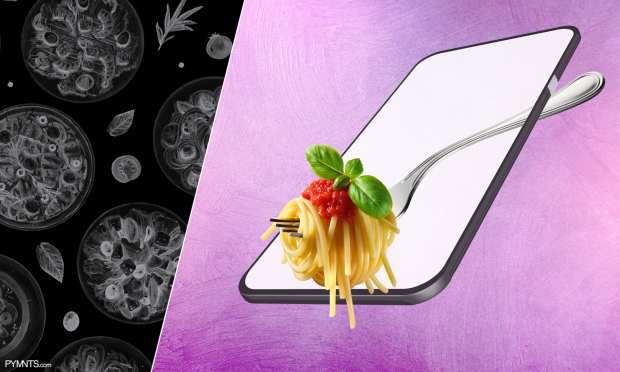
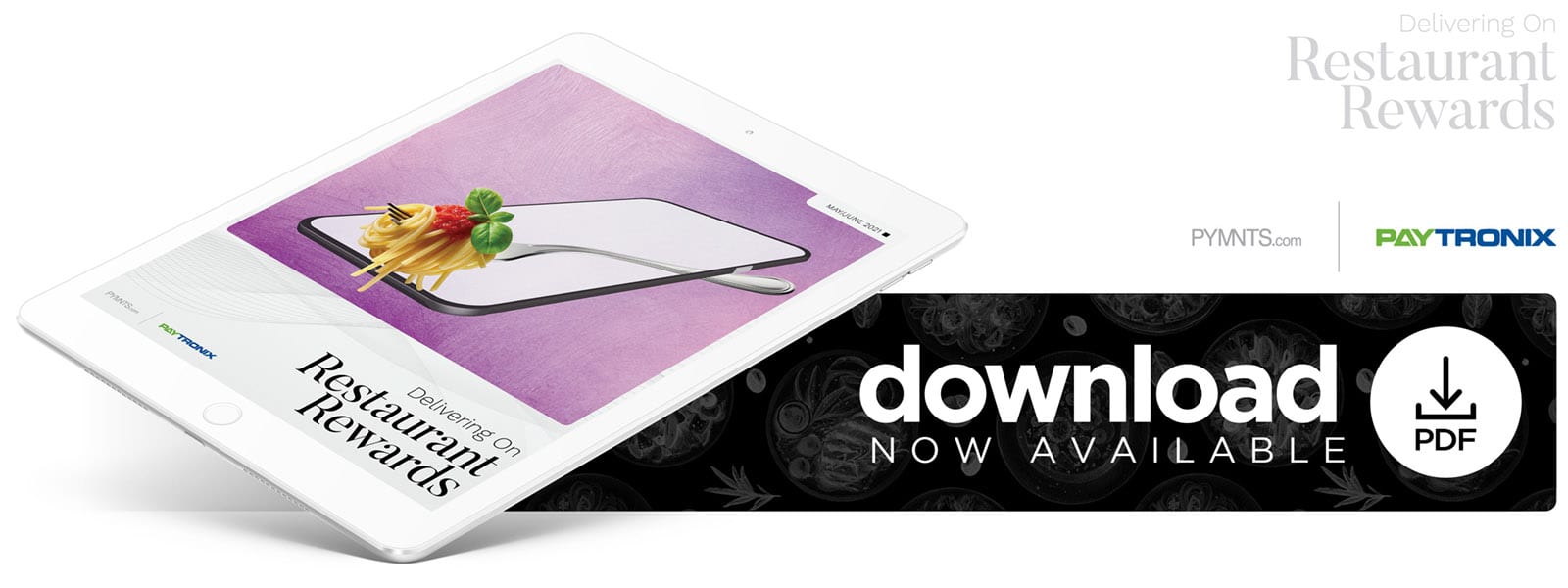 Connected devices are key to driving spend in the increasingly digital-first — and sometimes digital-only — economy, and the restaurant industry is no exception. Restaurant customers have long shifted away from dining in person in favor of ordering online and dining at home.
Connected devices are key to driving spend in the increasingly digital-first — and sometimes digital-only — economy, and the restaurant industry is no exception. Restaurant customers have long shifted away from dining in person in favor of ordering online and dining at home.
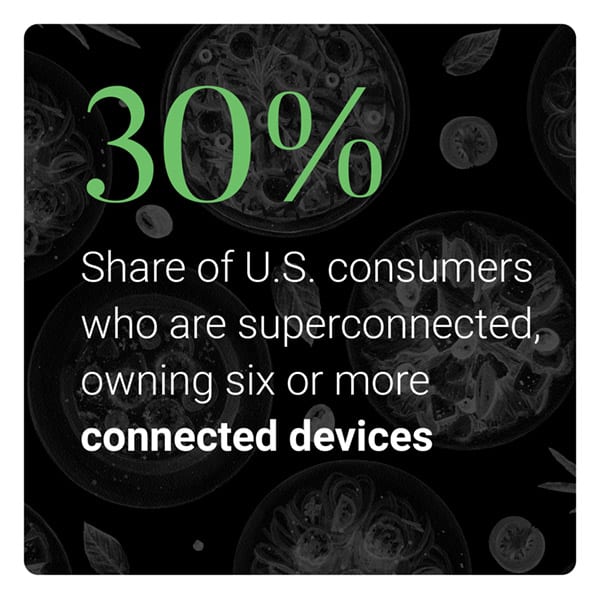 No two of these so-called “connected consumers” share the same digital ordering habits, however. Many not only own very different types of connected devices, but also use them to make very different types of restaurant orders. Some prefer ordering via smartphone app, for example, while others do so right from restaurants’ websites. Still others are looking to place orders using voice activated speakers.
No two of these so-called “connected consumers” share the same digital ordering habits, however. Many not only own very different types of connected devices, but also use them to make very different types of restaurant orders. Some prefer ordering via smartphone app, for example, while others do so right from restaurants’ websites. Still others are looking to place orders using voice activated speakers.
Who are these various “connected consumer” persona groups, and how can restaurants ensure they are meeting their expectations?
This is just one of the many questions that PYMNTS, in collaboration with Paytronix, set out to answer in the latest edition of Delivering On Restaurant Rewards. We surveyed a census-balanced panel of 2,030 U.S. consumers about the types of connected devices they own, how they use those devices to place food orders and which ordering features restaurants must provide to win their attention.
PYMNTS research shows that there is one particular type of “connected consumer” that has a stronger appetite for digital ordering experiences and loyalty programs than the rest: superconnected consumers. Superconnected consumers are those who own six or more different types of connected devices, ranging from smartphones to laptops to wearables to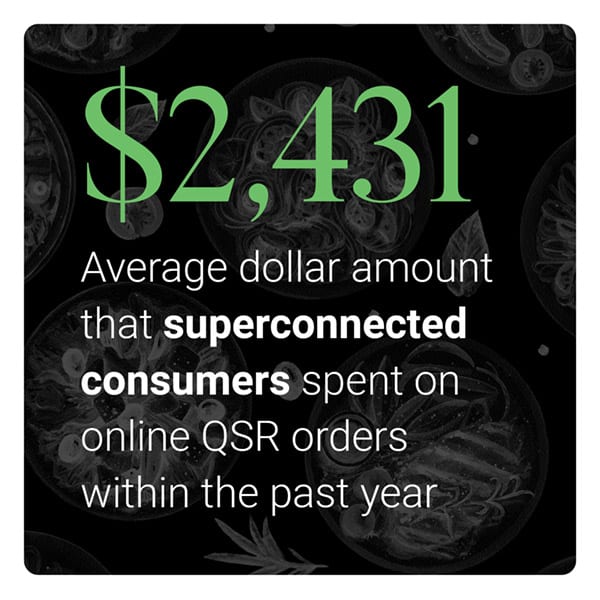 voice-activated speakers and beyond.
voice-activated speakers and beyond.
Superconnected consumers are more likely than consumers who own less than six connected devices to have shifted to ordering their food in person less and online more during the past 15 months. Twenty-seven percent say they have made this digital shift when ordering from at least one restaurant, in fact, and 87 percent of them say they plan to keep ordering food online at least somewhat as often as they do now, even after they can safely return to dining in restaurants. Restaurants will need to deliver loyalty and rewards programs that these consumers can engage with online if they hope to meet this segment’s ordering expectations going forward.
The superconnected also spend more on their food orders than any other group, regardless of whether that food is ordered online, in person or over the phone. The average superconnected consumer spent $2,424 on online table-service restaurant orders in the past year, for example, while consumers who own only a smartphone and a laptop or desktop computer (known as mainstream mobile consumers) spent just $1,100 on food orders of the same type. This 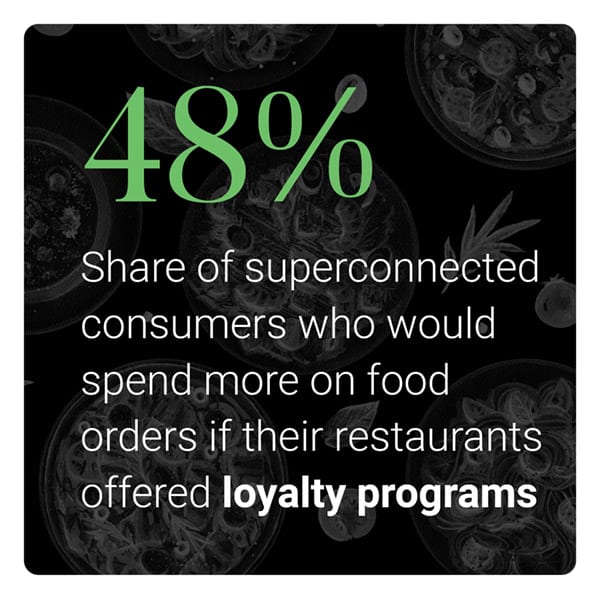 likely stems from the fact that superconnected consumers have the highest overall average income of any consumer segment, with 48 percent earning more than $100,000 per year. This combination makes them a formidable force for restaurant spend in the U.S.
likely stems from the fact that superconnected consumers have the highest overall average income of any consumer segment, with 48 percent earning more than $100,000 per year. This combination makes them a formidable force for restaurant spend in the U.S.
Superconnected consumers may be the biggest online food spenders of all, but they are hardly alone in demanding more omnichannel food ordering and loyalty program experiences. The latest edition of Delivering On Restaurant Rewards provides an overview of the various ways in which consumers use their connected devices to order food and what restaurants must do to win their business.
To learn more about the six different connected consumer personas in the U.S. and what they want from their food ordering experiences, download the report.
